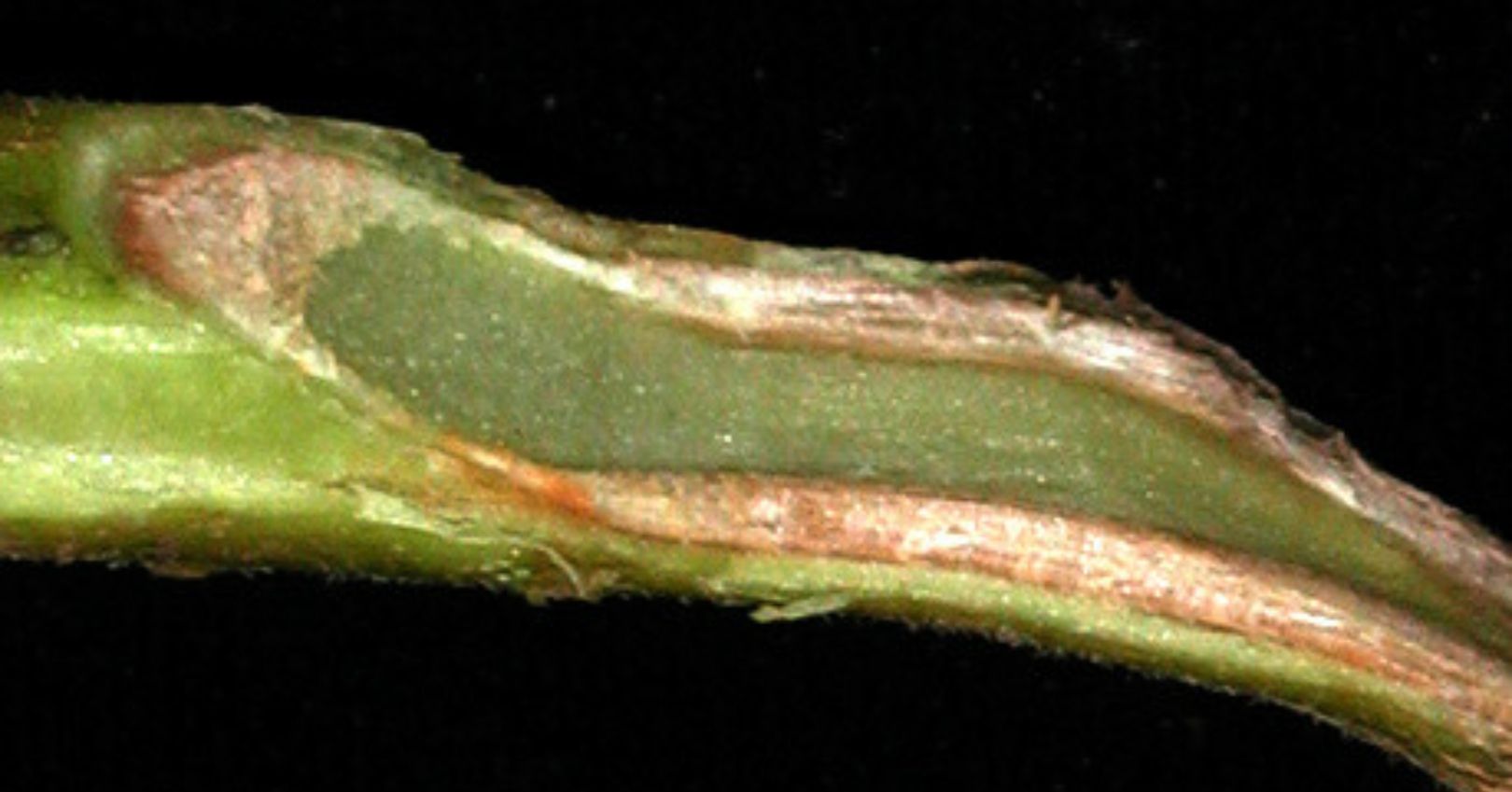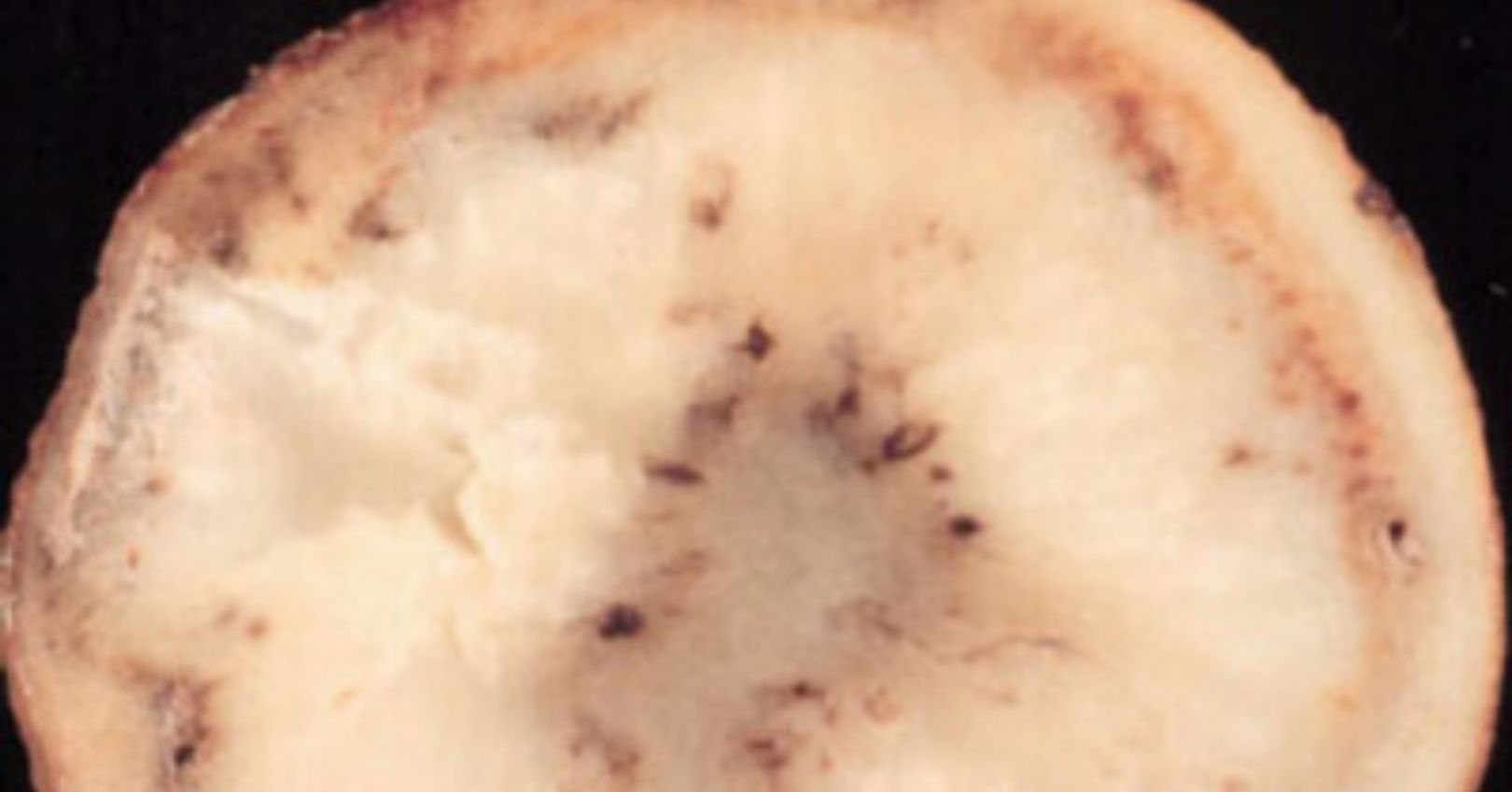Verticillium Wilt


Casual Agent
Verticillium dahliae is a soilborne fungus that infects many hosts.
Symptoms
Infected plants initially show wilting of the lower leaves during the hot part of the day with recovery in the evening. Eventually the plants permanently wilt. The vascular tissue of the main stem will be discolored. Diseased plants may also show early senescence. Occasionally the vascular tissue inside the tubers can be discolored as well.
Disease Cycle
Verticillium infects through plant roots, and the fungus grows through the vascular tissue up into the main stem. The wilting is caused by the fungal growth clogging the xylem and the plant trying to stop the movement of the fungus by blocking the colonized vascular tissue.
Verticillium produces an overwintering structure called a microsclerotium which is a hard black ball of fungal tissue. The microsclerotia germinate when a suitable host is planted and then infect the plant. Microsclerotia can survive in the soil for up to 10 years, depending on environmental conditions, while it waits for a suitable host. If root-feeding nematodes are present in high numbers in the soil, they can increase the severity of the disease by creating wounds on roots during feeding.
Management
Management of verticillium wilt is very difficult, and can be prevented with careful crop rotations. There are no resistant potato varieties. If crop rotation is not possible and verticillium is present, the field should be planted with grass, cereals or legumes for several years to reduce the number of microsclerotia in the soil. In severe cases, fumigation with 1,3-dichloropropene (e.g. Telone II) may be necessary. Telone II is a restricted product with application requirements.

